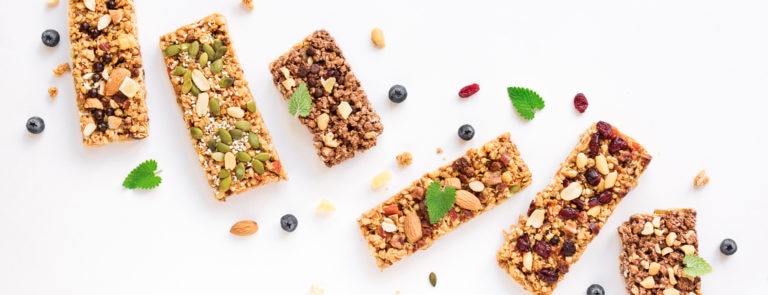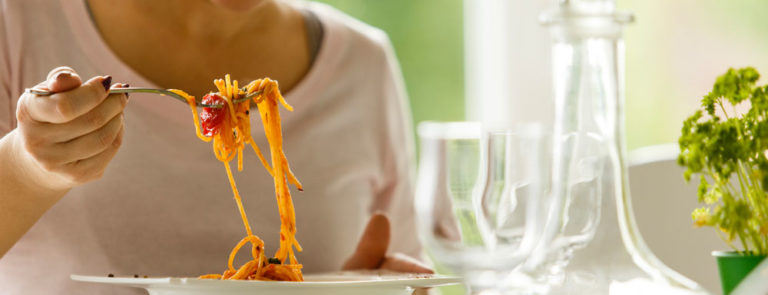15% off €35 OR 20% off €45
Code:CHOOSE
Are you eating too much salt?

How do you know if you are eating too much salt? What happens if you overload on sodium chloride? Are some salts better than others?
Summary
1How much salt should you be eating?
The guidelines for salt intake are eye-opening. It’s recommended that adults eat no more than 6g of salt a day. That’s barely 1 tsp! And remember...
2What happens when we eat too much salt?
Are you eating too much salt? It can be easy to do, either from restaurants and take away food, processed foods, or by adding your own. Too much...
3Which type of salt is the healthiest?
Avoid regular table salt. It’s heated to such high temperatures that almost all the nutrition is bleached and baked right out of it. Sea salt...
It’s easy to eat too much salt. Health guidelines for adults say that we should eat no more than 6g per day.1
That includes all the salt which is already in the foods, sauces, and ingredients we eat.
There are plenty of health risks associated with eating more salt than we should.
Our bodies need salt.
Sodium regulates blood pressure, and chloride helps digestion.2
But the problem lies in our modern diets. 75% of the salt we eat is already in our foods and can be lurking in some surprising places (bread and breakfast cereal, for example).3
So it’s unlikely that you need to add much extra salt to your meals.
What happens when we eat too much salt?
Are you eating too much salt?
It can be easy to do, either from restaurants and take away food, processed foods, or by adding your own.
Too much salt will affect your body and your health.
Your kidneys will keep more water in your body, which can lead to swelling of the hands, feet, ankles and lower limbs.
In extreme cases this can lead to oedema, which is painful and dangerous.4
People who eat a lot of salt often feel thirsty, so they drink more water.
You might think this is a good thing, but drinking too much can rid your body of important minerals.
The body loses calcium through urine. So if you drink more, and go to the toilet more, you will be losing more calcium.
Handpicked content: Calcium: functions, foods, deficiency & supplements
Too much salt also has a bad effect on blood pressure.
With too much sodium in your bloodstream, your kidneys struggle to remove the excess water in your system.
This quickly leads to high blood pressure, as your body tries to cope with the extra fluid.
High blood pressure affects around 30% of UK adults and is closely linked to serious health issues like heart disease.5
Handpicked content: 5 simple ways to lower your blood pressure
How much salt should you be eating?
The guidelines for salt intake are eye-opening.
It’s recommended that adults eat no more than 6g of salt a day.
That’s barely 1 tsp! And remember, that includes salt that is already in pre-made foods.
It’s not just referring to the salt you add to your food.
Children should eat less than this, because of the difference in body mass.

Foods that are high in salt
To help you cut down, here’s a list of high-salt foods to look out for based on surveys carried out by Consensus Action on Salt & Health:6
A lot of us start the day with a couple of slices of toast, not knowing that some bread contains particularly high levels of salt.
Although the salt content of some of ready-sliced loaves has been reduced, two slices of bread can hold 1g of salt.
Most of us have a tin or two of soup in the cupboard, but if you’re cutting down on salt you may prefer your own homemade recipe.
A tin of tomato soup can contain 2.2g of salt, which is just over a third of an adult's RDA (Recommended Daily Allowance) of salt.
However, different brands often have different salt levels so check food labels and choose reduced-salt versions.
On the surface, these may seem like a healthy option, but a closer look at the labels of some salads reveals otherwise.
Some supermarket salads can contain as much as 3g of salt in each portion whilst salads in some popular restaurants were packed with up to 5g of salt.
A staple part of a Full English breakfast, just two sausages could be hiding almost half of your daily salt allowance with over 1g of salt in each sausage.
Check the labels, choose lower salt options and keep in mind that condiments like ketchup and brown sauce can also include high levels of salt.
Often touted as a healthier option to salt-laden crisps and salted nuts, over a third of flavoured packets of popcorn actually contain more salt than a packet of crisps.
As well as reading food labels, why not make your own popcorn at home flavoured with cinnamon or chilli flakes.
With as much as 16g of salt in some takeaway pizzas, if you’re set on a delivery, avoid salty toppings like pepperoni, ham and bacon in favour of vegetables.
Check food labels for salt
Because so much of the salt we eat comes from our food, you need to get used to checking nutrition labels.
Confusingly, salt isn’t always labelled as salt. It can also be shown as sodium chloride.
Some food labels will only show amounts of sodium.
Multiply this figure by 2.5 to get the equivalent number for salt.
2.4g sodium per day is your 6g salt daily recommendation.7
Don’t automatically add salt to your meals. In fact, consider removing the salt shaker from the dinner table completely.
Taste meals first. You may find that you no longer need to add any salt at all.
Why not start adding herbs, spices, lemon, chilli, and other highly-flavoured options in place of salt?
Which type of salt is the healthiest?
Avoid regular table salt. It’s heated to such high temperatures that almost all the nutrition is bleached and baked right out of it.
Sea salt contains natural iodine from its ocean origins but a better choice would be iodised salt.8
Handpicked content: The benefits of sea salt
Smoked salts give your food a delicious flavour but they don’t have any additional health benefits.

Pink Himalayan salt
A popular choice of healthy salt is Himalayan pink salt, which comes from sea beds in the Himalayan Mountains. The pink colour is all natural and a result of the high iron content of this salt.
Himalayan pink salt is rich in minerals and contains all the essential trace elements your body needs.9
These days, it’s more affordable than some other exotic salts. It’s one of the healthiest salts you could use at home.
Handpicked content: The benefits of pink salt
There are some expensive salts on the market.
Grey Celtic Sea Salt is hand raked in France, and Fleur de Sel needs 40kgs of grey salt to produce 1.5kgs Fleur de Sel.
You might also see black lava salt from Hawaii (which contains activated charcoal), or Persian blue salt from an ancient salt lake in Iran.
Are these pretty salts any better for you than pink Himalayan though?
There’s no evidence to suggest this. For home use, pink Himalayan is the best and most cost-effective healthy salt choice.
The best way to choose a healthy salt is to leave the table salt on the shelf, and pick up an unrefined salt that suits your budget.
The advice in this article is for information only and should not replace medical care. Please check with your GP or healthcare professional before trying any supplements, treatments or remedies. Food supplements must not be used as a substitute for a varied and balanced diet and a healthy lifestyle.
Last updated: 2 September 2021
- https://www.nhs.uk/live-well/eat-well/salt-nutrition/
- https://www.eufic.org/en/whats-in-food/article/what-is-salt-and-how-does-it-affect-our-blood-pressure
- https://www.nhs.uk/live-well/eat-well/tips-for-a-lower-salt-diet/
- https://www.nhs.uk/conditions/oedema/
- https://www.nhs.uk/conditions/high-blood-pressure-hypertension/
- http://www.actiononsalt.org.uk/less/surveys/index.html
- https://www.nhs.uk/live-well/eat-well/salt-nutrition/
- https://www.ign.org/blog-salt-myths-2019.htm
- https://www.verywellfit.com/himalayan-pink-salt-4587779



